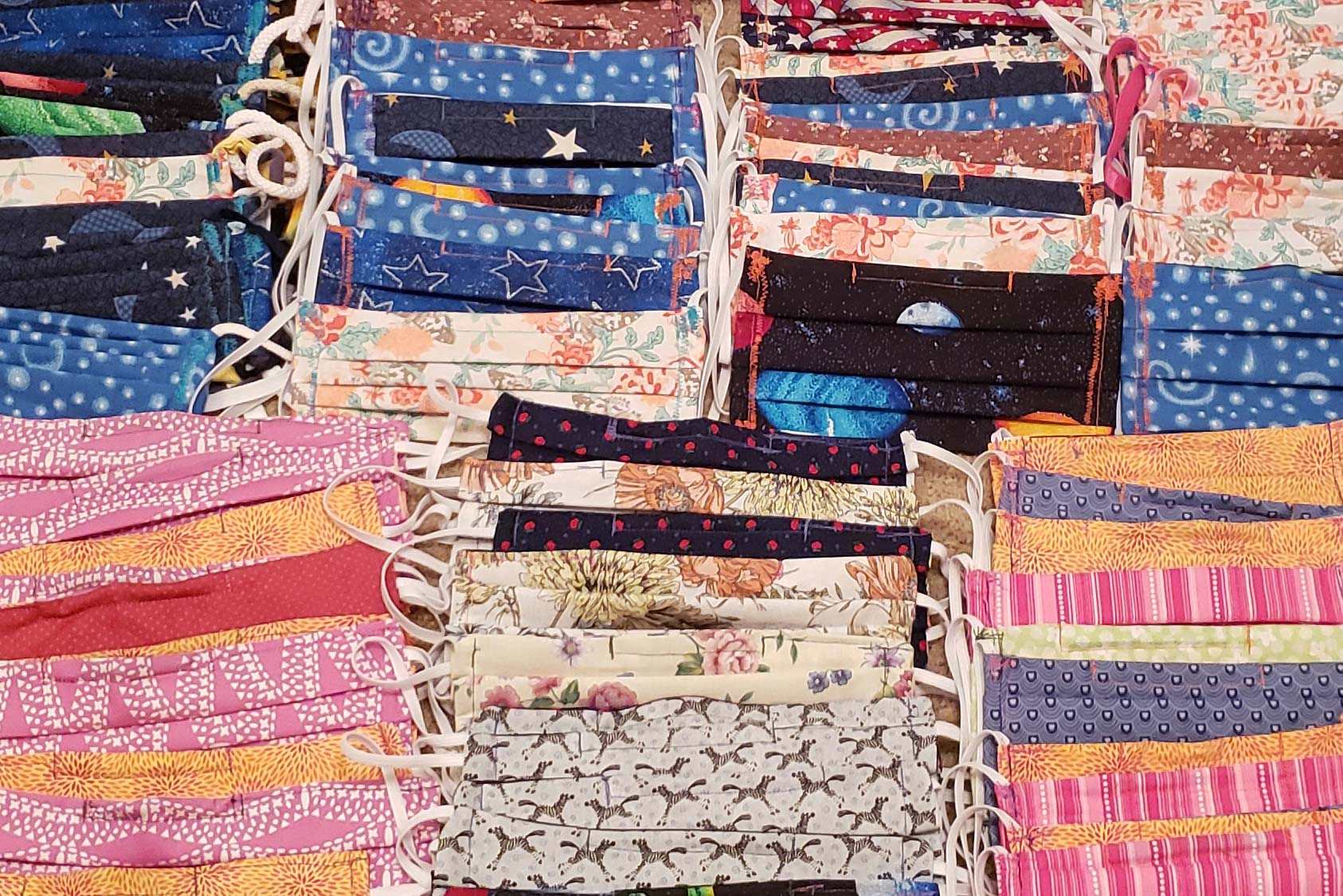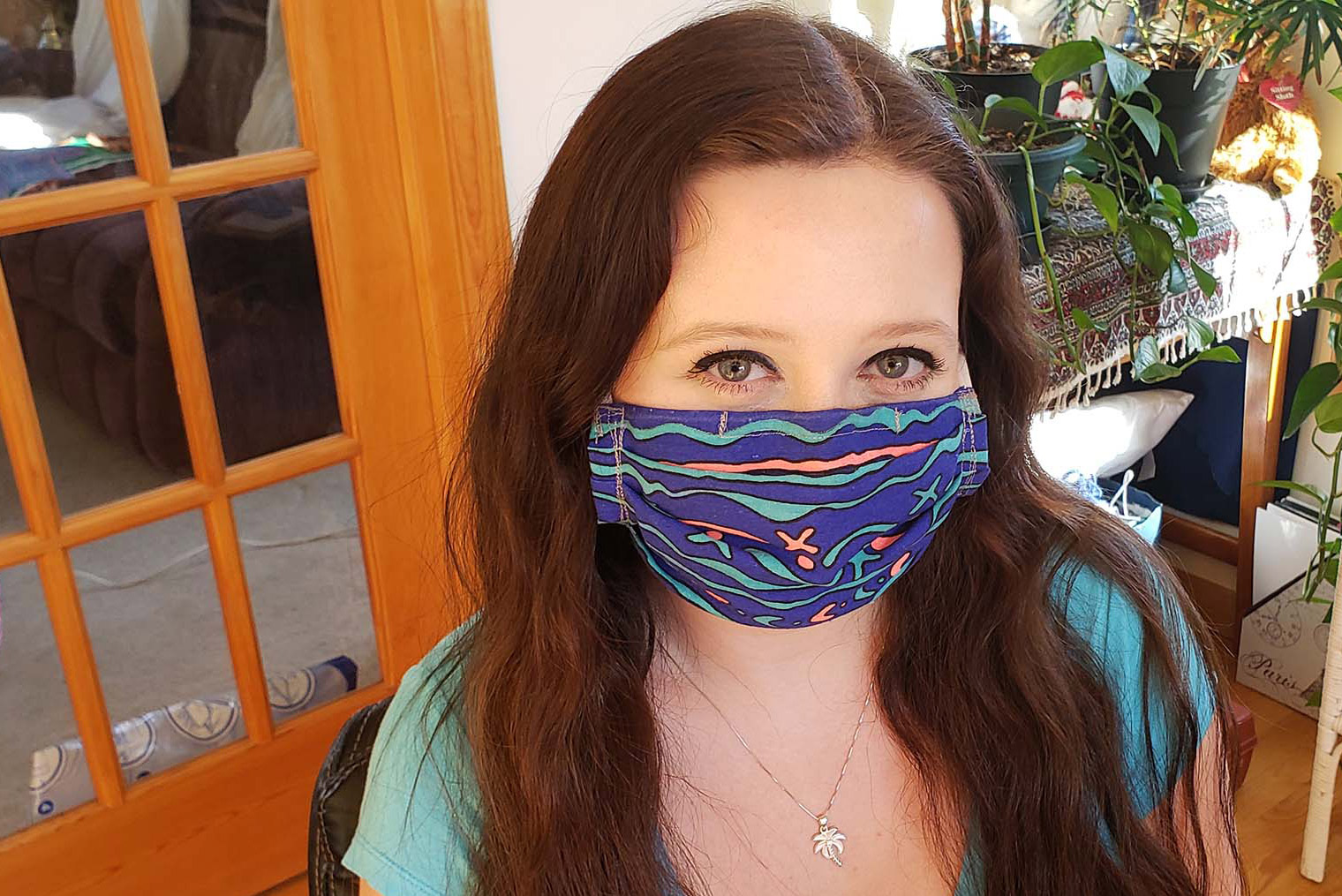BU Student Puts Her Passion for Sewing to Use Making Face Masks for Healthcare Workers
BU Student Puts Her Passion for Sewing to Use Making Face Masks for Healthcare Workers
BU Student Puts Her Passion for Sewing to Use Making Face Masks for Healthcare Workers
Laura Stursberg fell in love with sewing in middle school, outside of Hartford, Conn. “The first thing I made was a pair of purple pajama pants,” says Stursberg, a student in Sargent College’s entry-level occupational therapy clinical doctorate program. She makes her own skirts and dresses, along with coffee cozies she sells at craft fairs.
Today, though, Stursberg (Sargent’21) is putting her considerable sewing skills to work helping in the battle against COVID-19. When BU moved all spring classes to remote learning, she returned to her family home. She began seeing local news stories about healthcare workers being forced to store their one-time-use disposable surgical masks in paper bags and use them for an entire week because of the acute shortage of personal protective equipment (PPE). “It’s harrowing that practitioners have to resort to these measures,” Stursberg says, “especially in facilities with patients who are high-risk and immunocompromised.”
She had a lot of fabric on hand and thought she could use her spare time between classes to make cotton masks that could be washed in hot water and safely reused. So she went online and googled “Connecticut Face Masks,” found a Facebook group, Sewing Face Masks, Farmington Valley, CT, and volunteered her services.

It’s really uplifting and inspiring to see what a community that cares can do when it really matters.
Stursberg is now not only sewing masks (each takes between 15 and 30 minutes), but helping manage the Facebook page, which has approximately 1,200 members. In less than three weeks, the group has made and donated more than 4,700 masks to healthcare practitioners in the greater Hartford area, as well as to local police and fire departments. And they’re working to complete requests from area nursing homes, medical centers, and first-responders for thousands more.
While not as effective as N-95 masks, the cotton masks are often worn over disposable surgical masks and N95s, extending their wear-time. The masks Stursberg and her fellow volunteers are making can be sanitized in autoclaves or at home in boiling hot water, dried on high heat. For some of the people they’re donating to, these handmade masks offer the only protection they have against transmission of the virus.
Many of the Facebook group’s volunteers, like Stursberg, are experienced sewers who have made instructional videos for the novice members or posted tutorials on YouTube or posted videos they filmed of themselves to show the group how they solved a particular mask-making problem. Other volunteers, who aren’t sewers, have helped by donating fabric and other materials, cutting fabric and elastic, delivering the masks to clinics and police and fire stations, or providing sewing machine maintenance.
In this video, Stursberg offers an easy-to-follow, step-by-step tutorial about how to make a reusable cotton face mask that can be washed daily.
Stursberg says she plans to continue her volunteer work as long as there’s a demand for face masks. “It’s been really uplifting and inspiring to see what a community that cares can do when it really matters,” she says.
Those interested in donating money or supplies to the Facebook group Sewing Face Masks, Farmington Valley, CT can find information on the group’s gofundme page. To learn how you can help support the critical PPE shortage in your area, visit the group’s website. BU Today would like to give a shout-out to Laura’s mother, Sarah Stursberg, who shot the two videos for this story.

Comments & Discussion
Boston University moderates comments to facilitate an informed, substantive, civil conversation. Abusive, profane, self-promotional, misleading, incoherent or off-topic comments will be rejected. Moderators are staffed during regular business hours (EST) and can only accept comments written in English. Statistics or facts must include a citation or a link to the citation.